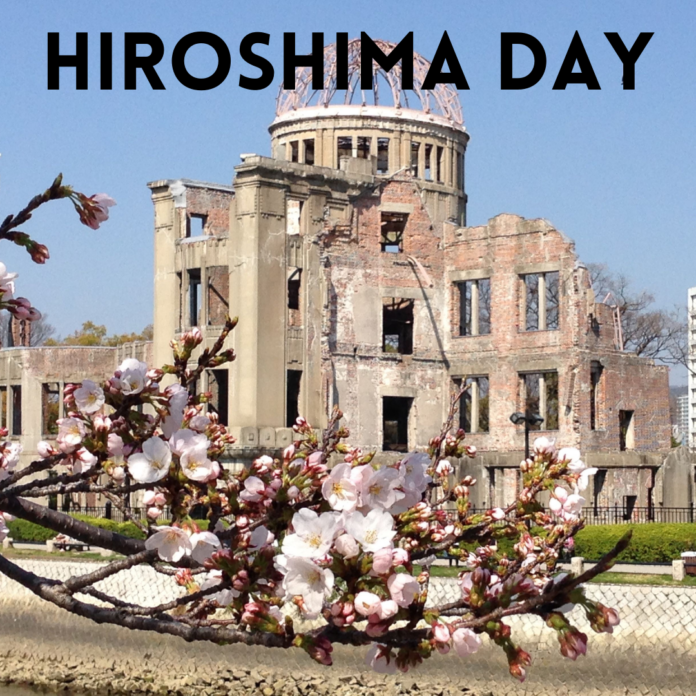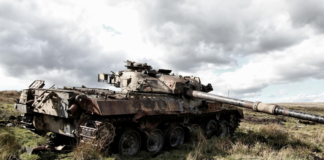If one were to pinpoint an exact date where the dynamics of the modern world changed completely and drastically, no answer would be more appropriate than the date- 6th of August, 1945. Ironically, the day which saw the most extreme illustration of destruction caused by a human invention highlights the importance of manifestation of world peace, even more, significant than what is done on International Peace day. Hiroshima Day, which falls on the 6th of August every year marks the anniversary of the first of the only two nuclear bomb blastings the world has witnessed to date. It is celebrated to promote peace politics against war and serves as a reminder of what will happen to the world if the global powers let their wasted self-interest and unruly hunger for power drive them towards using the weapon of ultimate destruction.
When the United States of America decided to drop the nuclear bomb on the Japanese city of Hiroshima and Nagasaki in an attempt to finally curb the raging world war II which had claimed millions of lives from almost all continents, no one at the time was aware of the magnitude of destruction the weapon “Little Boy” was capable of. When the city of Hiroshima obliterated on the morning of 6th August, the 80,000 people who died instantly from the explosion were later proved to have been the luckier ones, as the following several generations of the survivors were sentenced to a life of pain and misery as a result of the radiation poisoning that had permanently affected their DNA. The radiation poisoning wasn’t limited to the cities of Hiroshima and Nagasaki, but the effects of the tragedy were seen all over Japan. The atom bomb not only left Japan in a state no less than the hell on earth, it shook the entire world, causing even Albert Einstein to describe his contribution to the Manhattan Project as the greatest mistake of his life.
The world war came to an end, but the arms race didn’t. Several countries all over the globe went on to great lengths to have “Little Boys” of their own, even until the very end of the 20th century. The nuclear race created and destroyed several friendships on the international political fields, created several situations of hostility wherein the world came close to witnessing another nuclear attack. The 4 decades of the cold war saw the two superpowers of the USA and USSR building on their defenses by one-upping each other’s nuclear weapon count. There once came a time where USSR had enough nuclear weapons to destroy the world 5 times over, and the USA had become a nuclear powerhouse capable of destroying the world 13 times over. The nuclear Non-Proliferation Treaty which included 5 nuclear weapon-holders namely- USA Russia, China, UK, and France was unable to stop countries like India, Israel, North Korea, Iran, and Pakistan among others from carrying out their nuclear programs. Presently, it is estimated that more than 13,000 nuclear warheads are possessed by a total of 9 countries in the world. It is also believed that if any one of these 9 countries decides to use their nuclear missiles in a war, its retaliation would cause the entire human race to be wiped out from the face of the earth in no time. Countries like India have promised to follow the “no first use policy”, but it will be of little solace in an actual war-like situation wherein every powerful country on the global sphere has a different idea for vengeance. But that being said, every country knows that the best hope for a harmonious world lies in not making use of the ultimate weapon of mass destruction.
World politics has undergone catatonic changes since the morning of 6th August 1945. Japan and the United States of America have developed an all-weather friendship and have become exceptionally close to each other on the international political platform. Countries have started solving their conflicts through diplomacy rather than acting impulsively. Today, the ruins of Hiroshima and Nagasaki are covered in greenery and the people living in the cities can be seen living their life with the discipline and integrity that rightfully suits their Japanese upbringing. Hiroshima is blooming with beauty and pride, just like the city’s official flower-oleander. But ironically just like the oleander, underneath the beautiful, well-planned city and the kind, smiling faces of its people, Hiroshima hides her poisonous history- a poison that they can never be eliminated or dismissed. The Japanese look at the ruins of Hiroshima not as a mark of their defeat, but as a reminder of hope, praying that humanity survives till eternity so that no other city will have to share the fate of Hiroshima and Nagasaki.










